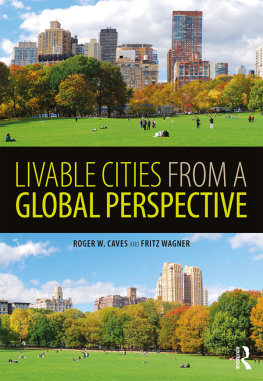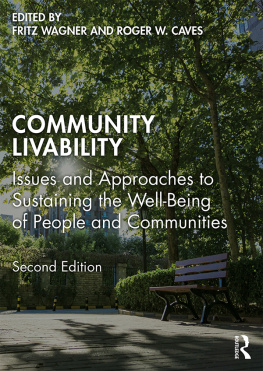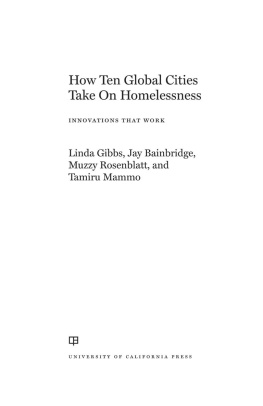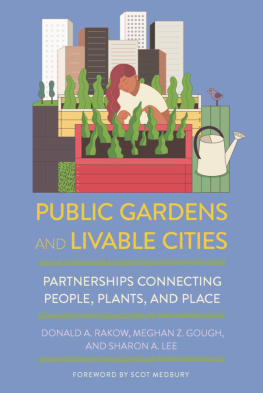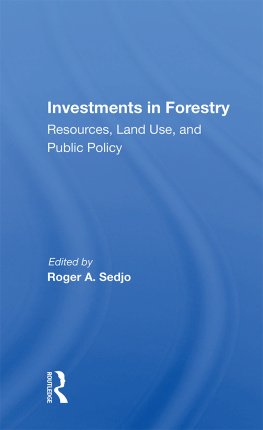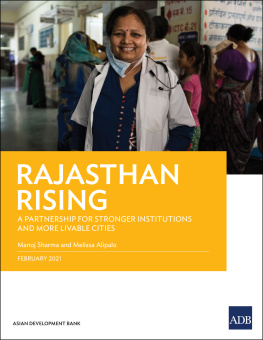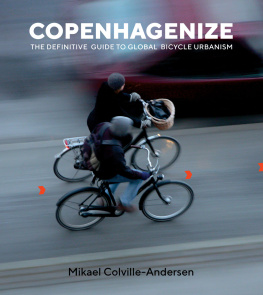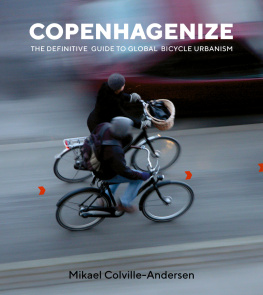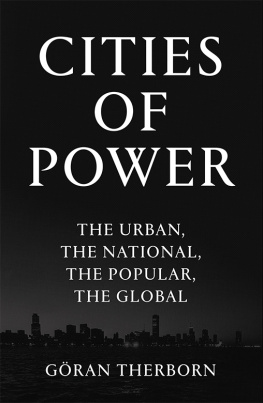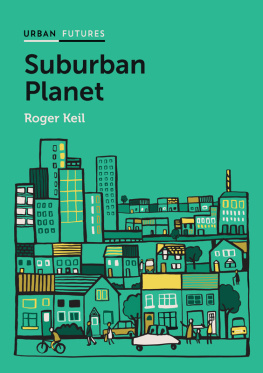Caves Roger W. - Livable Cities From a Global Perspective
Here you can read online Caves Roger W. - Livable Cities From a Global Perspective full text of the book (entire story) in english for free. Download pdf and epub, get meaning, cover and reviews about this ebook. year: 2018, publisher: Routledge, genre: Politics. Description of the work, (preface) as well as reviews are available. Best literature library LitArk.com created for fans of good reading and offers a wide selection of genres:
Romance novel
Science fiction
Adventure
Detective
Science
History
Home and family
Prose
Art
Politics
Computer
Non-fiction
Religion
Business
Children
Humor
Choose a favorite category and find really read worthwhile books. Enjoy immersion in the world of imagination, feel the emotions of the characters or learn something new for yourself, make an fascinating discovery.
- Book:Livable Cities From a Global Perspective
- Author:
- Publisher:Routledge
- Genre:
- Year:2018
- Rating:4 / 5
- Favourites:Add to favourites
- Your mark:
- 80
- 1
- 2
- 3
- 4
- 5
Livable Cities From a Global Perspective: summary, description and annotation
We offer to read an annotation, description, summary or preface (depends on what the author of the book "Livable Cities From a Global Perspective" wrote himself). If you haven't found the necessary information about the book — write in the comments, we will try to find it.
Caves Roger W.: author's other books
Who wrote Livable Cities From a Global Perspective? Find out the surname, the name of the author of the book and a list of all author's works by series.
Livable Cities From a Global Perspective — read online for free the complete book (whole text) full work
Below is the text of the book, divided by pages. System saving the place of the last page read, allows you to conveniently read the book "Livable Cities From a Global Perspective" online for free, without having to search again every time where you left off. Put a bookmark, and you can go to the page where you finished reading at any time.
Font size:
Interval:
Bookmark:
First published 2018
by Routledge
711 Third Avenue, New York, NY 10017
and by Routledge
2 Park Square, Milton Park, Abingdon, Oxon, OX14 4RN
Routledge is an imprint of the Taylor & Francis Group, an informa business
2018 Taylor & Francis
The right of Roger W. Caves and Fritz Wagner to be identified as the authors of the editorial material, and of the authors for their individual chapters, has been asserted in accordance with sections 77 and 78 of the Copyright, Designs and Patents Act 1988.
All rights reserved. No part of this book may be reprinted or reproduced or utilised in any form or by any electronic, mechanical, or other means, now known or hereafter invented, including photocopying and recording, or in any information storage or retrieval system, without permission in writing from the publishers.
Trademark notice: Product or corporate names may be trademarks or registered trademarks, and are used only for identification and explanation without intent to infringe.
Library of Congress Cataloging-in-Publication Data
Names: Caves, Roger W., editor. | Wagner, Fritz W., editor.
Title: Livable cities from a global perspective / [edited by] Roger W. Caves
and Fritz Wagner.
Description: New York, NY : Routledge, 2018.
Identifiers: LCCN 2017059190 | ISBN 9781138696747 (hardback) |
ISBN 9781138696754 (pbk.)
Subjects: LCSH: UrbanizationSocial aspects. | City planningSocial
aspects. | Community development. | Urban policy.
Classification: LCC HT361 .L789 2018 | DDC 307.76dc23
LC record available at https://lccn.loc.gov/2017059190
ISBN: 978-1-138-69674-7 (hbk)
ISBN: 978-1-138-69675-4 (pbk)
ISBN: 978-1-315-52341-5 (ebk)
Typeset in Sabon
by Apex CoVantage, LLC

The term livable city has become a commonly used term throughout the globe. It can be found in articles, reports, and books. We hear the term in public meetings, on the radio, on television shows, and especially see it discussed on the Internet. All levels of governments, the private sector, and nonprofit sector have addressed the term in one way or another. It is everywhere. However, for as widespread as its use is, we have many definitions for what actually constitutes a livable city. We use it interchangeably with such other terms as a sustainable city, smart city, eco-city, resilient city, intelligent city, or green city. Common attributes of each term include the need for walkability, the need for a variety of housing types, mixed land uses, preservation of open space, opportunities for civic engagement, job opportunities for all, respecting community character and local heritage, quality educational facilities, low crime rates, balanced transportation options, and so forth. These are all quality of life attributes that cities desire.
The term livable means different things to different people. Cambridge Systematics define livability in the following manner:
Livability is most often used to describe the diverse aspects of society, surroundings, and shared experiences that shape a community. Livability is focused on the human experience of place, and is specific to the place and time in question. It includes an interrelated set of economic, spatial, and social components that together are challenging to understand and measure in the defined world of planning and development. As such, it is best defined by the state, region, association, or community in question, and is best measured at a geographic scale where definitional consensus about livability can be found.
Another organization, Partners for Livable Communities, believes Livability is the sum of the factors that add up to a communitys quality of lifeincluding the built and natural environments, economic prosperity, social stability and equity, educational opportunity, and cultural, entertainment and recreation possibilities.
However we define livable, we will continue to witness debating the attributes that constitute a livable city. Areas want information. They want to know how areas go about achieving the goal of livability. They want to know the efforts that other areas have tried. Have these areas been successful? How long have they been successful? Is everyone able to enjoy the livable city or just certain groups? What are the obstacles areas face in their quests for achieving livability? These and other questions are addressed in the chapters contained in this book.
There is no one-size-fits-all approach to becoming a livable city. Cities are unique. Many cities have been proactive is becoming a livable city. Others has procrastinated so long hoping that things get better without any true guidance. These are areas without direction. Areas need effective leadership if they are to become livable in the eyes of its citizens.
With the world becoming increasingly urbanized, this book aims to address how residents and areas around the world have responded to calls for developing livable cities. The book offers case studies on a broad selection of cities and examines how these cities are attempting to achieve the goal of becoming a livable city. It draws on the interdisciplinary expertise of both academics and practitioners from areas around the globe. Chapters examine the following questions:
- How is livable defined?
- Is there an official policy trying to reach it?
- How did the area get to be livable?
- What tools/techniques were used to achieve livability?
- Are there any metrics for determining livability?
- Is the area livable for everyone or certain groups?
- How do we keep a city livable?
The book commences with a strong introduction into the various dimension of livability. It discusses the concept of livability, a discussion of movements related to livable cities, a review of various ranking systems of livability and concludes with a discussion on how it relates to sustainability and to resilience.
The remainder of the book is divided into five parts, with each part containing case studies of three cities from around the globe. discusses how three areas are actually creating livability. The book concludes with final remarks on livable cities from a global perspective and a list of websites for readers to get more information on livability for the cities covered in this book.
Caroline Andrew is the director of the Centre on Governance at the University of Ottawa. Her research interests focus on partnerships between equity-seeking community groups and municipal governments to create and develop programs around the better integration of immigrants, enhancement of womens rights, and elimination of violence against women. She is a member of the Order of Canada.
Jorge Luiz Barbosa holds a degree in Geography from the Federal University of Rio de Janeiro (1980), a masters degree in Geography from the Federal University of Rio de Janeiro (1990), a PhD in Geography from the University of So Paulo (2002), and a postdoctoral degree in Human Geography from the University of BarcelonaSpain (2010). He is currently an associate professor at the Graduate Program in Geography at the Fluminense Federal University. He is the director of the Favelas Observatory in Rio de Janeiro and works with Urban Geography, particularly with landscape, politics, and culture matters.
Ralph Becker is a 43-year resident of Salt Lake City, where he served two terms as mayor (20082015). He also served in the Utah State Legislature as a member of the House of Representatives for 11 years (19962007). For most of that tenure, he was in legislative leadership positions, including five years as House Minority Leader. In 2015, he served as President of the National League of Cities. In his political career, he focused attention on serving the public interest through solution-orienting, inclusive governance practices. He became known for his work improving conditions for the LGBT community around discrimination; sustainability practices and protection of lands and resource; and changes to improve equity in education, access to the outdoors, and community development. In 2017, he held a Leadership in Government Fellowship with the Open Society Foundation. He was an adjunct professor in the University of Utah College of Architecture and Planning, teaching classes each semester in Environmental Planning and Law, Public Involvement and Governance, Public Lands Planning and Management, and related courses and lectures. He holds an undergraduate degree from the University of Pennsylvania, and from the University of Utah, he holds a JD and a MS in planning.
Next pageFont size:
Interval:
Bookmark:
Similar books «Livable Cities From a Global Perspective»
Look at similar books to Livable Cities From a Global Perspective. We have selected literature similar in name and meaning in the hope of providing readers with more options to find new, interesting, not yet read works.
Discussion, reviews of the book Livable Cities From a Global Perspective and just readers' own opinions. Leave your comments, write what you think about the work, its meaning or the main characters. Specify what exactly you liked and what you didn't like, and why you think so.

